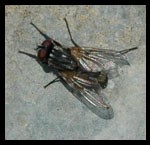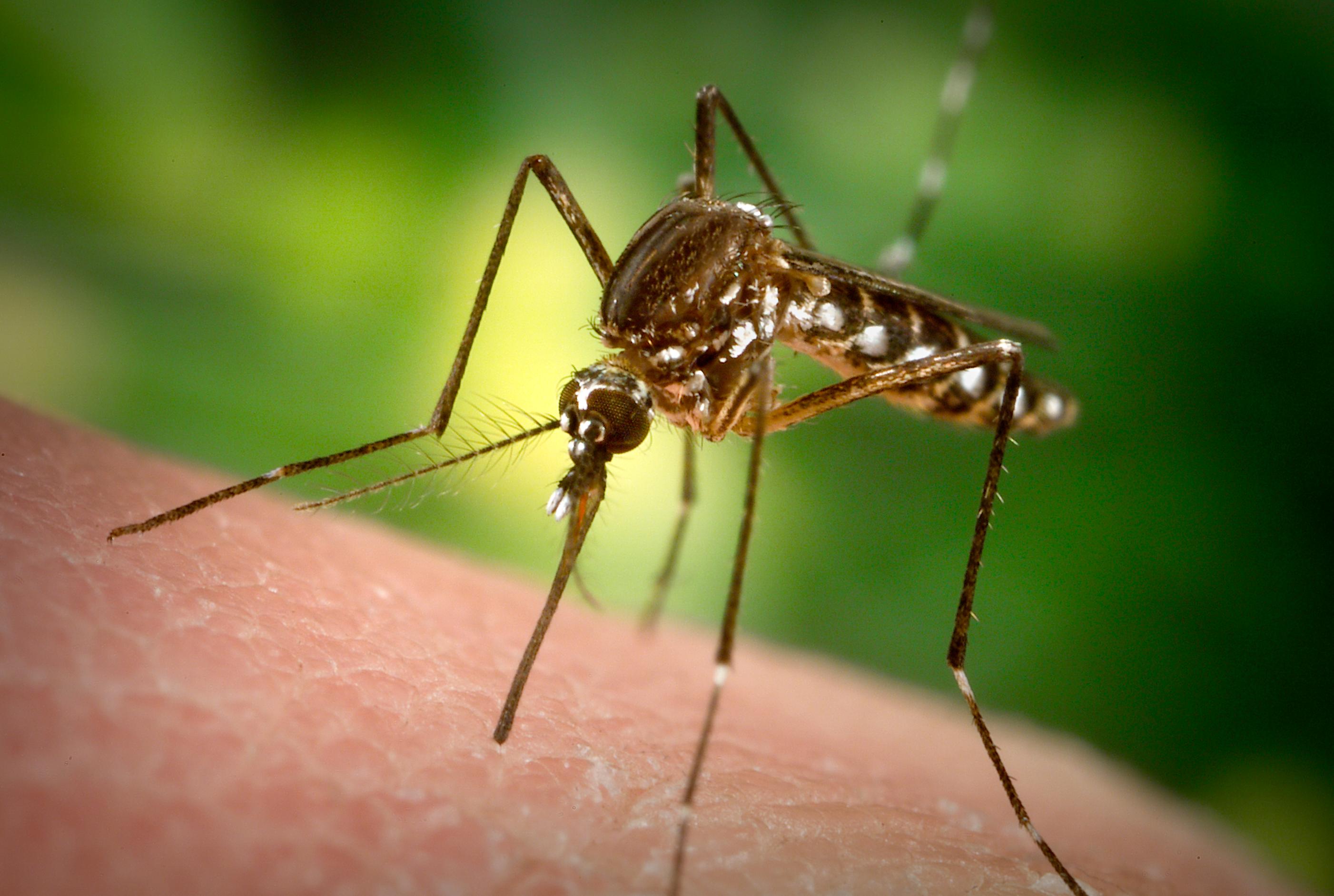Description:
Adult house flies are gray and black in color with a checkered patterned abdomen on the top and a creamy yellow on the underside. Adults feed on available blood, sweat, tears, saliva and other bodily fluids of the animal. Animals respond to house flies by ear flapping, head shaking and pen avoidance.
Eggs are laid in an array of decomposing matter. Larvae develop in less than 2 weeks but consuming the decomposing matter. Major breeding sites including human garbage dumps, livestock manure, open privies, poultry litter, soiled bedding, and fruit and vegetable waste.
Animals attacked:
All animals
Veterinary Impact:
House flies have been documented to transmit several pathogens on their body. House flies are more a threat to the general public due their pathogen transmission and nuisance. House flies cause little to no harm to livestock, even in large numbers. They are a nuisance and aggravating to livestock but generally do not have ill effects.
The house fly is a developmental host for Habronema musae and Draschia megestoma, spirurid nematodes the cause gastric and cutaneous forms of habronemiasis in horses.
House flies have been implemented to transmit the chicken tapeworm Choanotaenia infundibulum. Prevalence of this tapeworm becomes greatly reduced by elevating the cages of chickens.
Secondary wound myiasis cases have been recorded at times. The female house fly is attracted to the purulent wounds to feed and lay eggs. The ensuing larvae develop in the wound discharges and slow the healing process.
Disease Transmission:
House flies are potential vectors (carriers) of enteric pathogens.
Control:
The most effective way to control house fly populations is to take an integrated pest management approach to both the adults and larvae. The house fly’s ability to thrive allows for large densities in a small amount of time and just treating for the adults will not decrease the infestation. The best approach is to use several methods at once, focusing on source reduction.
Three general approaches to reduce problems include:
1) Prevent breeding by making manure unavailable or too dry or wet for the larvae to survive or kill the larvae before they become adults
2) Kill adults before they cause harm or start to produce eggs
3) Exclude adults entrance by using screens or other barriers
Housing for people and animals should be designed so that it limits the accumulation of house fly breeding locations. Preventing enteric diseases begins with preventing filth flies from breeding near humans. Facilities housing animals should be designed for easy removal of manure and cleaning of stalls frequently. Waste should be disposed of properly by either burial, spreading in a thin layer (less than 3 cm) on open fields, submersion in water, or aerobic composting.
Beneficial organisms such as predators, parasites and natural competitors occur naturally in the breeding locations of the house fly larvae. These organisms kill the eggs, larvae and pupae of the house flies providing assistance to the cause. Predatory mites, beetles, and other fly larvae feast on the developing horn fly larvae. Parasitic wasps, referred to as parasitoids, are particularly effective. The female wasp seeks out a host (horn fly pupa) in which to lay her egg. After finding a host, she drills into the puparium (outer cover of the pupa) with her ovipositor and deposits one or more eggs. The wasp probes the pupa twice, once to kill the house fly larva and a second time to lay an egg. The developing wasp larva consumes the house fly larva and then an adult wasp emerges from the puparium. Dry breeding grounds will encourage beneficial insect and mite development. Some parasitoid wasps can be purchased commercially to enhance the number of wasps present on your property.
Larvicides provide control against developing larvae. Some products can be sprayed directly to the infested manure pats while others can be administered as a feed additive or bolus. Many of the larvicides on the market are known as IGR, insect growth regulators, and were developed specifically for horn flies and other filth flies developing in the manure. The active ingredient within IGRs target just the developing flies and have little to no affect on other insects or mammals. The active ingredient gives the developing fly larvae a false sense of chemical production, this makes the larvae think they have successfully completed development and they will continue on to the pupal stage. Since they have not completed development many will never emerge from the pupal stage and others will emerge but the exoskeleton will not be able to harden and the fly will die by exposure to the environment.
House fly adults are best handled indoors with traps and adulticides. Sticky traps, light traps, and sugar and pheromone-based insecticidal baits are effective ways to control house flies. These traps will become ineffective without proper maintenance; sticky traps need to be changed when no space is available on the tape and light traps need to be cleaned out every so often. Sugar and pheromone-based insecticide baits need to be replaced at least every month if not sooner to maintain their effectiveness.
Residual sprays can also be used for house flies but have less of an effect on them. Contact with the insecticide is the only way to get adequate control and that can be hard to achieve on a continual basis. Manure management is a much more effective way to get rid of a house fly problem.






